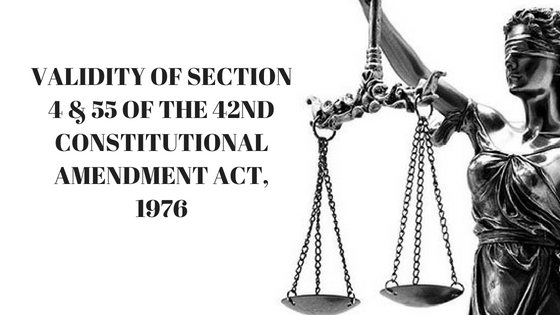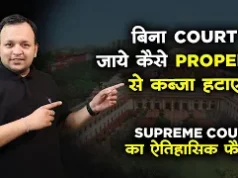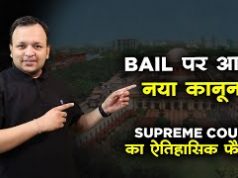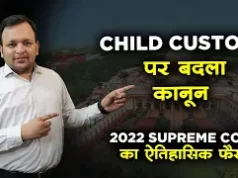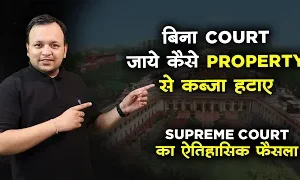Aapka Consultant Judgment Series- In this series, we are providing case analysis of Landmark Judgments of Hon’ble Supreme Court of India.
Minerva Mills Ltd. and Ors. Vs. Union of India (UOI) and Ors.
AIR 1980 SC 1789, (1980) 2 SCC 591, (1980) 3 SCC 625, [1981] 1 SCR 206
Hon’ble Judges/Coram: Y.V. Chandrachud, C.J., A.C. Gupta, N.L. Untwalia, P.N. Bhagwati and P.S. Kailasam, JJ.
Date of Decision: 09.05.1980
FACTS: -Minerva Mills Ltd. is a limited company dealing in textiles. On August 20, 1970 the Central Government appointed a committee under Industries (Development Regulation) Act, 1951 to make a full and complete investigation of the affairs of the Minerva Mills Ltd as it was of the opinion that there had been or was likely to be substantial fall in the volume of production. The said Committee submitted its report and on the basis of which the Central Government passed an order under section 18A of the 1951 Act, authorising the National Textile Corporation Ltd., to take over the management of the Mills on the ground that its affairs are being managed in a manner highly detrimental to public interest. This undertaking was nationalised and taken over by the Central Government under the provisions of the Sick Textile Undertakings (Nationalisation) Act, 1974. The petitioners challenged the constitutionality of sections 4 and 55 of the Constitution (Forty Second Amendment) Act, 1976 on the ratio of the majority judgment in Kesavananda Bharati’s case, namely, though by Article 368 of the Constitution Parliament is given the power to amend the Constitution, that power cannot be exercised so as to damage the basic features of the Constitution or so as to destroy its basic structure.
ISSUE: -Whether section 4 & 55 of the 42nd Constitutional Amendment Act, 1976 which affected changes in Article 31C and Article 368 of the Indian Constitution, valid or not?
JUDGMENT: – Section 55 of the 42nd Constitutional Amendment Act inserted clause 4 and 5 in Article 368. The newly introduced clause 5 of Article 368 transgresses the limitations on the amending power of Parliament and is hence unconstitutional. It demolishes the very pillars on which the preamble rests by empowering the Parliament to exercise its constituent power without any “limitation whatever”. No constituent power can conceivably go higher than the sky-high power conferred by clause (5), for it even empowers the Parliament to “repeal the provisions of this Constitution”, that is to say, to abrogate the democracy and substitute for it a totally antithetical form of Government. The power to destroy is not a power to amend. Since the Constitution had conferred a limited amending power on the Parliament, the Parliament cannot under the exercise of that limited power enlarge that very power into an absolute power. Indeed, a limited amending power is one of the basic features of Indian Constitution and therefore, the limitations on that power cannot be destroyed. In other words, Parliament cannot, under Article 368, expand its amending power so as to acquire for itself the right to repeal or abrogate the Constitution or to destroy its basic and essential features. The donee of a limited power cannot by the exercise of that power convert the limited power into an unlimited one.
The newly introduced clause (4) of Article 368 is equally unconstitutional and void because clauses (4) and (5) are inter-linked. While clause (5) purports to remove all limitations on the amending power, clause (4) deprives the courts of their power to call in question any amendment of the Constitution. Indian Constitution is founded on a nice balance of power among the three wings of the State namely, the Executive, the Legislature and the Judiciary. It is the function of the Judges, may their duty, to pronounce upon the validity of laws. If courts are totally deprived of that power, the fundamental rights conferred upon the people will become a mere adornment because rights without remedies are as writ in water. A controlled Constitution will then become uncontrolled. Clause (4) of Article 368 totally deprives the citizens of one of the most valuable modes of redress which is guaranteed by Article 32. The conferment of the right to destroy the identity of the Constitution coupled with the provision that no court of law shall pronounce upon the validity of such destruction is a transparent case of transgression of the limitations on the amending power. If a constitutional amendment cannot be pronounced to be invalid even if it destroys the basic structure of the Constitution, a law passed in pursuance of such an amendment will be beyond the pale of judicial review because it will receive the protection of the constitutional amendment which the courts will be powerless to strike down. Article 13 of Constitution will then become a dead letter because even ordinary laws will escape the scrutiny of the courts on the ground that they are passed on the strength of a constitutional amendment which is not open to challenge.
Whether in view of the majority decision in Kesavananda Bharati it is permissible to the Parliament to so amend the Constitution as to give a position of precedence to directive principles over the fundamental rights, must necessarily depend upon whether Articles 14 and 19, which must now give way to laws passed in order to effectuate the policy of the State towards securing all or any of the principles of Directive Policy, are essential features of the basic structure of the Constitution. It is only if the rights conferred by these two articles are not a part of the basic structure of the Constitution that they can be allowed to be abrogated by a constitutional amendment. If they are a part of the basic structure, they cannot be obliterated out of existence in relation to a category of laws described in Article 31C or, for the matter of that, in relation to laws of any description whatsoever, passed in order to achieve any object or policy whatsoever. This will serve to bring out the point that a total emasculation of the essential features of the Constitution is, by the ratio in Keshavananda Bharati, not permissible to the Parliament. The significance of the perception that Parts III and IV together constitute the core of commitment to social revolution and they, together, are the conscience of the Constitution is to be traced to a deep understanding of the scheme of the Indian Constitution. The harmony and balance between fundamental rights and directive principles is an essential feature of the basic structure of the Constitution. On any reasonable interpretation, there can be no doubt that by the amendment introduced by section 4 of the Forty Second Amendment, Articles 14 and 19 stand abrogated at least in regard to the category of laws described in Article 31C. The startling consequence which the amendment has produced is that even if a law is in total defiance of the mandate of Article 13 read with Articles 14 and 19, its validity will not be open to question so long as its object is to secure a directive principle of State Policy.
No doubt, it is possible to conceive of laws which will not attract Article 31C, since they may not bear direct and reasonable nexus with the provisions of Part IV. However, a large majority of laws, the bulk of them, can at any rate be easily justified as having been passed for the purpose of giving effect to the policy of the State towards securing some principle or the other laid down in Part IV. In respect of all such laws, which will cover an extensive gamut of the relevant legislative activity, the protection of Articles 14 and 19 will stand wholly withdrawn. It is then no answer to say, while determining whether the basic structure of the Constitution is altered, that at least some laws will fall outside the scope of Article 31C. A total deprivation of fundamental rights, even in a limited area, can amount to abrogation of a fundamental right just as partial deprivation in every area can. The fact, therefore that some laws may fall outside the scope of Article 31C is no answer to the contention that the withdrawal of protection of Articles 14 and 19 from a large number of laws destroys the basic structure of the Constitution.
No law passed for the purpose of giving effect to the Directive principle in Article 38 can damage or destroy the basic structure of the Constitution, there was no necessity and more so the justification, for providing by a Constitutional amendment that no law which is passed for giving effect to the policy of the State towards securing any principle laid down in Part IV shall be deemed to be void on the ground that it is inconsistent with or takes away or abridges the rights conferred by Articles 14 and 19. The object and purpose of the amendment of Article 31C is really to save laws which cannot be saved under Article 19(2) to (6). Laws which fall under those provisions are in the nature of reasonable restrictions on the fundamental rights in public interest and therefore they abridge but do not abrogate the fundamental rights. It was in order to deal with laws which do not get the protection of Article 19(2) to (6) that Article 31C was amended to say that the provisions of Article 19, inter alia cannot be invoked for voiding the laws of the description mentioned in Article 31C. Articles 14 and 19 do not confer any fanciful rights. They confer rights which are elementary for the proper and effective functioning of a democracy They are universally so regarded, as is evident from the Universal Declaration of Human Rights.
Section 4 of the Forty Second Amendment found an easy way to circumvent Article 32(4) by withdrawing totally the protection of Articles 14 and 19 in respect of a large category of laws, so that there will be no violation to complain of in regard to which redress can be sought under Article 32. The power to take away the protection of Article 14 is the power to discriminate without a valid basis for classification. By a long series of decisions the Supreme Court has held that Article 14 forbids class legislation but it does not forbid classification. Regional chauvinism will have a field day if Article 19(1)(d) is not available to the citizens. Already, there are disturbing trends on a part of the Indian horizon. Those trends will receive strength and encouragement if laws can be passed with immunity, preventing the citizens from exercising their right to move freely throughout the territory of India. The nature and quality of the amendment introduced by section 4 of the Forty Second Amendment is, therefore, such that it virtually tears away the heart of basic fundamental freedoms.
Article 31C cannot be read down so as to save it from the challenge of unconstitutionality because to do so will involve a gross distortion of the principle of reading down depriving that doctrine of its only or true rationale when words of width are used inadvertently one must at least take the Parliament at its word when, especially, it undertakes a constitutional amendment. If the Parliament has manifested a clear intention to exercise an unlimited power, it is impermissible to read down the amplitude of that power so as to make it limited.
In the very nature of things it is difficult for a court to determine whether a particular law gives effect to a particular policy. Whether a law is adequate enough to give effect to the policy of the State towards securing a directive principle is always a debatable question and the courts cannot set aside the law as invalid merely because, in their opinion, the law is not adequate enough to give effect to a certain policy. The power to enquire into the question whether there is a direct and reasonable nexus between the provisions of a law and a Directive Principle cannot confer upon the Courts the power to sit in Judgment over the policy itself of the State. At the highest, courts can, under Article 31C, satisfy themselves as to the identity of the law in the sense whether it bears direct and reasonable nexus with a Directive Principle. If the court is satisfied as to the existence of such nexus, the inevitable consequence provided for by Article 31C must follow. Indeed, if there is one topic on which all the 13 Judges in Kesavananda Bharti were agreed, it is this: that the only question open to judicial review under the unamended Article 31C was whether there is a direct and reasonable nexus between the impugned law and the provisions of Articles 39(b) and (c). Reasonableness is evidently regarding the nexus and not regarding the law.
HELD: -Sections 4 and 55 of the Constitution (Forty Second Amendment) Act are void and beyond the amending power of the Parliament. Moreover, Article 31C (amended) and clause 4 & 5 of the Article 368 are null And void.
To Get Legal Opinion from Advocates/ Legal Experts, Please click here
To Get Legal Opinion from Retired Hon’ble Judges, Please click here



